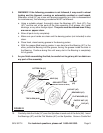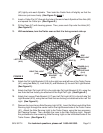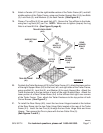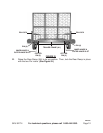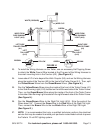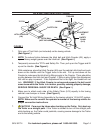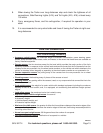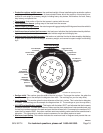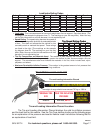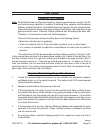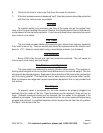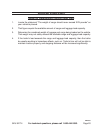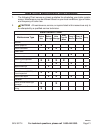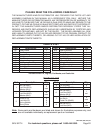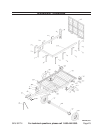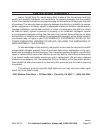
Page 18SKU 92174
For technical questions, please call 1-800-444-3353.
TIRE CARE
Checking Tire Pressure
Note: Underinflated tires can decrease handling, stopping performance, traction, tire life,
and load-carrying capability, in addition to causing other negative and hazardous
effects, including tire failure. Overinflated tires are at greater risk of an impact break,
where the tread and casing break when striking a hard edge, often opening a huge
gash across the tread. Incorrect inflation pressure also increases tires wear rate.
Therefore, it is important to keep tires inflated properly.
Check all tires’ pressure at least monthly, due to the following factors:
Most tires naturally lose air gradually.
Tires can suddenly lose air if the tire strikes a pothole, curb, or other object.
It is usually not possible to determine underinflation of radial tires by visual in-
spection.
This vehicle has 60 PSI recommended cold tire inflation pressure. The term “cold”
in this manual does not refer to the temperature outside, but it refers to the fact that a tire
that has not been driven for a period is cooler (and therefore has lower pressure) than a
tire that has been driven on. Tires heat up while being driven on. To check (or fill to) a
tire’s cold inflation, the tire must have not been driven for more than a mile or two for at
least three hours. If you check a tires pressure when it is not “cold”, the pressure will ap-
pear higher than the actual cold tire inflation.
Steps for Maintaining Proper Tire Pressure
Locate the recommended tire pressure on the vehicle’s tire information placard,
certification label, or in the owner’s manual. This trailer has 60 PSI recommended
cold tire inflation pressure.
Measure and record the tire pressure of all tires.
If the tire pressure is too high in any of the tires and the tires have not been driven
for at least three hours, slowly release air by gently pressing on the tire valve stem
with the edge of your tire gauge until you get to the correct pressure. If the vehicle
have been driven within the past three hours and the tire pressure is too high on any
tires, then recheck the pressure once the tires have been allowed to sit motionless
for at least three hours.
If the tire pressure is too low, note the difference between the measured tire pres-
sure and the correct tire pressure. These “missing” pounds of pressure are what
you will need to add.
At a service station, add the missing pounds of air pressure to each tire that is
underinflated.
•
•
•
1.
2.
3.
4.
5.
REV 07e



